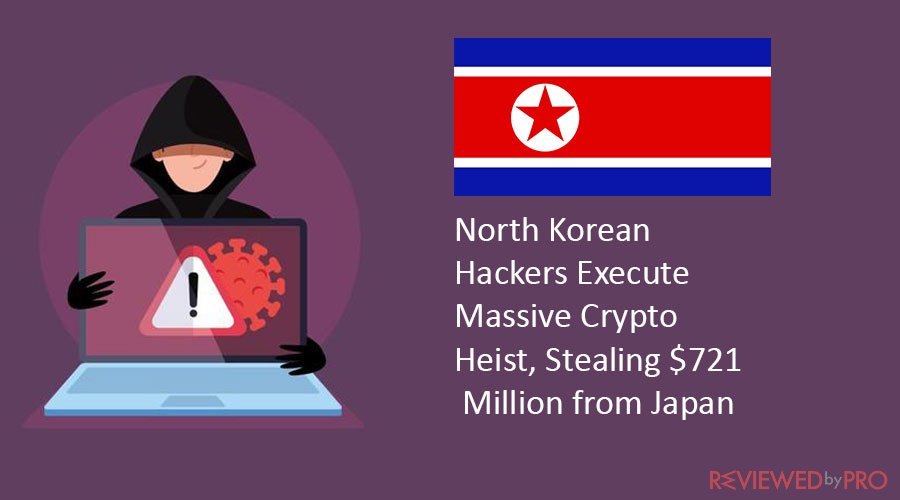
In a stunning display of cybercriminal sophistication, North Korean hackers managed to orchestrate one of the largest cryptocurrency heists in history, siphoning off a staggering $721 million from Japan. By employing advanced hacking techniques and leveraging vulnerabilities in the digital landscape, these malicious actors successfully executed their nefarious plot, leaving both individuals and businesses in Japan reeling from the financial fallout.
The Elaborate Scheme
North Korean hackers, widely believed to be linked to the government-sponsored Lazarus Group, meticulously planned and executed their audacious crypto heist. With their extensive knowledge of cybersecurity vulnerabilities, the hackers exploited weaknesses in the Japanese cryptocurrency ecosystem, targeting both exchanges and individual users.
What is Lazarus group?
The Lazarus Group is a notorious cybercrime organization believed to be based in North Korea. It gained international attention for its involvement in high-profile cyber attacks, including financial thefts, espionage, and sabotage. The group has been active since at least 2009 and is known for its sophisticated hacking techniques and the use of advanced malware.
The Lazarus Group's activities primarily target financial institutions, government agencies, and cryptocurrency exchanges. It has been attributed to several significant cyber attacks, such as the 2014 Sony Pictures hack, the 2016 Bangladesh Bank heist, and various attacks on South Korean entities. The group has also been linked to the creation and distribution of destructive malware, including the WannaCry ransomware and the Triton/Trisis malware, which targets industrial control systems.
The group is believed to have close ties to the North Korean government, and there are indications that it operates under state sponsorship. While exact details about the group's composition and organization remain largely undisclosed, it is widely believed that the Lazarus Group consists of highly skilled hackers with expertise in various hacking techniques, including spear-phishing, zero-day exploits, and malware development.
The Lazarus Group's motivations are multifaceted, with financial gain being a prominent objective. The group has targeted financial institutions and cryptocurrency exchanges to steal funds, often using elaborate techniques such as social engineering, spear-phishing campaigns, and the deployment of custom-designed malware. Additionally, the group's activities have been linked to geopolitical motives, including gathering intelligence and conducting disruptive operations against perceived adversaries.
The international cybersecurity community, along with law enforcement agencies and intelligence organizations, closely monitors the Lazarus Group's activities. Efforts to attribute attacks and disrupt the group's operations have been ongoing, involving collaboration between various countries and cybersecurity firms. These efforts aim to mitigate the impact of the Lazarus Group's actions and hold its members accountable for their cybercrimes.
As the Lazarus Group continues to evolve its tactics and targets, it serves as a stark reminder of the persistent and evolving threats posed by state-sponsored cybercriminal organizations. The group's activities highlight the importance of robust cybersecurity measures, international cooperation, and ongoing vigilance to protect individuals, organizations, and critical infrastructures from cyber attacks.
Phishing and Social Engineering
The hackers initiated their attack by employing phishing techniques and social engineering tactics. They crafted convincing emails and messages, impersonating legitimate entities within the cryptocurrency industry. Unsuspecting victims were enticed to click on malicious links or download infected files, unwittingly granting the hackers access to their digital wallets or compromising exchange platforms.
Vulnerabilities in Exchange Infrastructure
Exploiting vulnerabilities in the infrastructure of Japanese cryptocurrency exchanges proved to be a key component of the hackers' success. By identifying weaknesses in security protocols and exploiting flaws in exchange platforms, they gained unauthorized access to user accounts and siphoned off substantial amounts of digital assets.
Laundering the Stolen Funds
To obfuscate the origin and destination of the stolen funds, the hackers employed sophisticated laundering techniques. They utilized mixing services, decentralized exchanges, and various other strategies to conceal the flow of cryptocurrencies, making it challenging for law enforcement agencies to trace and recover the stolen assets.
Global Collaboration and Investigation
Upon discovery of the massive heist, Japanese authorities swiftly launched an investigation, collaborating with international law enforcement agencies, cybersecurity firms, and cryptocurrency experts. The goal was to unravel the intricate network of transactions, identify the perpetrators, and potentially recover the stolen funds. Efforts to strengthen security measures and improve cooperation between countries were also initiated to prevent future cyber attacks of this magnitude.
Impact on Japan's Crypto Landscape
The staggering scale of this cyber attack sent shockwaves throughout the Japanese cryptocurrency community. Both individual investors and major exchanges suffered significant financial losses, eroding trust in the industry and highlighting the urgent need for robust security measures. Regulators and industry leaders vowed to reinforce cybersecurity protocols, implement stricter regulations, and enhance user education to safeguard against future threats.
The North Korean hacking group's audacious theft of $721 million worth of cryptocurrency from Japan stands as a stark reminder of the ever-present risks in the digital landscape. As cybercriminals continue to evolve their tactics, it is imperative for individuals, businesses, and governments to remain vigilant and adopt robust security measures to protect against such devastating attacks. The incident serves as a catalyst for strengthening global collaboration and fortifying defenses to ensure the safety and integrity of the cryptocurrency ecosystem.




